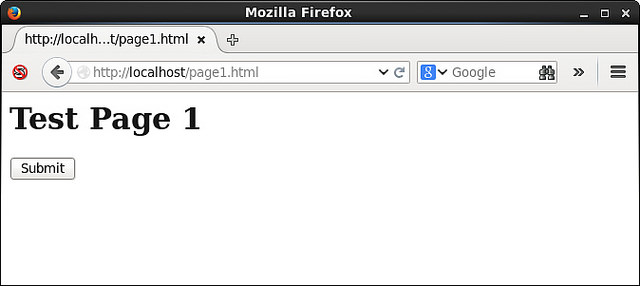Python全排列操作实例分析
本文实例讲述了Python全排列操作。分享给大家供大家参考,具体如下:
step 1: 列表的全排列:
这个版本比较low
# -*-coding:utf-8 -*-
#!python3
def permutation(li,index):
for i in range(index,len(li)):
if index == len(li)-1:
print(li)
return
tmp = li[index]
li[index] = li[i]
li[i] = tmp
permutation(li,index+1)
tmp = li[index]
li[index] = li[i]
li[i] = tmp
调用:
permutation([1,2,3,4],0)
运行结果:
[1, 2, 3, 4]
[1, 2, 4, 3]
[1, 3, 2, 4]
[1, 3, 4, 2]
[1, 4, 3, 2]
[1, 4, 2, 3]
[2, 1, 3, 4]
[2, 1, 4, 3]
[2, 3, 1, 4]
[2, 3, 4, 1]
[2, 4, 3, 1]
[2, 4, 1, 3]
[3, 2, 1, 4]
[3, 2, 4, 1]
[3, 1, 2, 4]
[3, 1, 4, 2]
[3, 4, 1, 2]
[3, 4, 2, 1]
[4, 2, 3, 1]
[4, 2, 1, 3]
[4, 3, 2, 1]
[4, 3, 1, 2]
[4, 1, 3, 2]
[4, 1, 2, 3]
step2: 字符串的全排列:
# -*-coding:utf-8 -*-
#!python3
def permutation(str):
li = list(str)
cnt = 0 #记录全排列的总数
def permutation_list(index):
if index == len(li) -1:
nonlocal cnt
cnt += 1
print(li)
for i in range(index,len(li)):
li[index],li[i] = li[i],li[index]
permutation_list(index+1)
li[index], li[i] = li[i], li[index]
ret = permutation_list(0)
print("共有%d中全排列" % cnt)
return ret
备注:
在闭包中,内部函数依然维持了外部函数中自由变量的引用—单元。内部函数不能修改单元对象的值(但是可以引用)。若尝试修改,则解释器会认为它是局部变量。这类似于全局变量和局部变量的关系。如果在函数内部修改全局变量,必须加上global声明,但是对于自由变量,尚没有类似的机制。所以,只能使用列表。(python3中引入了关键字:nonlocal)
测试:
permutation('abcd')
运行结果:
['a', 'b', 'c', 'd']
['a', 'b', 'd', 'c']
['a', 'c', 'b', 'd']
['a', 'c', 'd', 'b']
['a', 'd', 'c', 'b']
['a', 'd', 'b', 'c']
['b', 'a', 'c', 'd']
['b', 'a', 'd', 'c']
['b', 'c', 'a', 'd']
['b', 'c', 'd', 'a']
['b', 'd', 'c', 'a']
['b', 'd', 'a', 'c']
['c', 'b', 'a', 'd']
['c', 'b', 'd', 'a']
['c', 'a', 'b', 'd']
['c', 'a', 'd', 'b']
['c', 'd', 'a', 'b']
['c', 'd', 'b', 'a']
['d', 'b', 'c', 'a']
['d', 'b', 'a', 'c']
['d', 'c', 'b', 'a']
['d', 'c', 'a', 'b']
['d', 'a', 'c', 'b']
['d', 'a', 'b', 'c']
共有24中全排列
step3 : 使用python标准库
import itertools t = list(itertools.permutations([1,2,3,4])) print(t)
运行结果:
[(1, 2, 3, 4), (1, 2, 4, 3), (1, 3, 2, 4), (1, 3, 4, 2), (1, 4, 2, 3), (1, 4, 3, 2), (2, 1, 3, 4), (2, 1, 4, 3), (2, 3, 1, 4), (2, 3, 4, 1), (2, 4, 1, 3), (2, 4, 3, 1), (3, 1, 2, 4), (3, 1, 4, 2), (3, 2, 1, 4), (3, 2, 4, 1), (3, 4, 1, 2), (3, 4, 2, 1), (4, 1, 2, 3), (4, 1, 3, 2), (4, 2, 1, 3), (4, 2, 3, 1), (4, 3, 1, 2), (4, 3, 2, 1)]
可以指定排列的位数:
import itertools t = itertools.permutations([1,2,3,4],3) #只排列3位 print(list(t))
运行结果:
[(1, 2, 3), (1, 2, 4), (1, 3, 2), (1, 3, 4), (1, 4, 2), (1, 4, 3), (2, 1, 3), (2, 1, 4), (2, 3, 1), (2, 3, 4), (2, 4, 1), (2, 4, 3), (3, 1, 2), (3, 1, 4), (3, 2, 1), (3, 2, 4), (3, 4, 1), (3, 4, 2), (4, 1, 2), (4, 1, 3), (4, 2, 1), (4, 2, 3), (4, 3, 1), (4, 3, 2)]
更多关于Python相关内容感兴趣的读者可查看本站专题:《Python数学运算技巧总结》、《Python数据结构与算法教程》、《Python函数使用技巧总结》、《Python字符串操作技巧汇总》、《Python入门与进阶经典教程》及《Python文件与目录操作技巧汇总》
希望本文所述对大家Python程序设计有所帮助。

